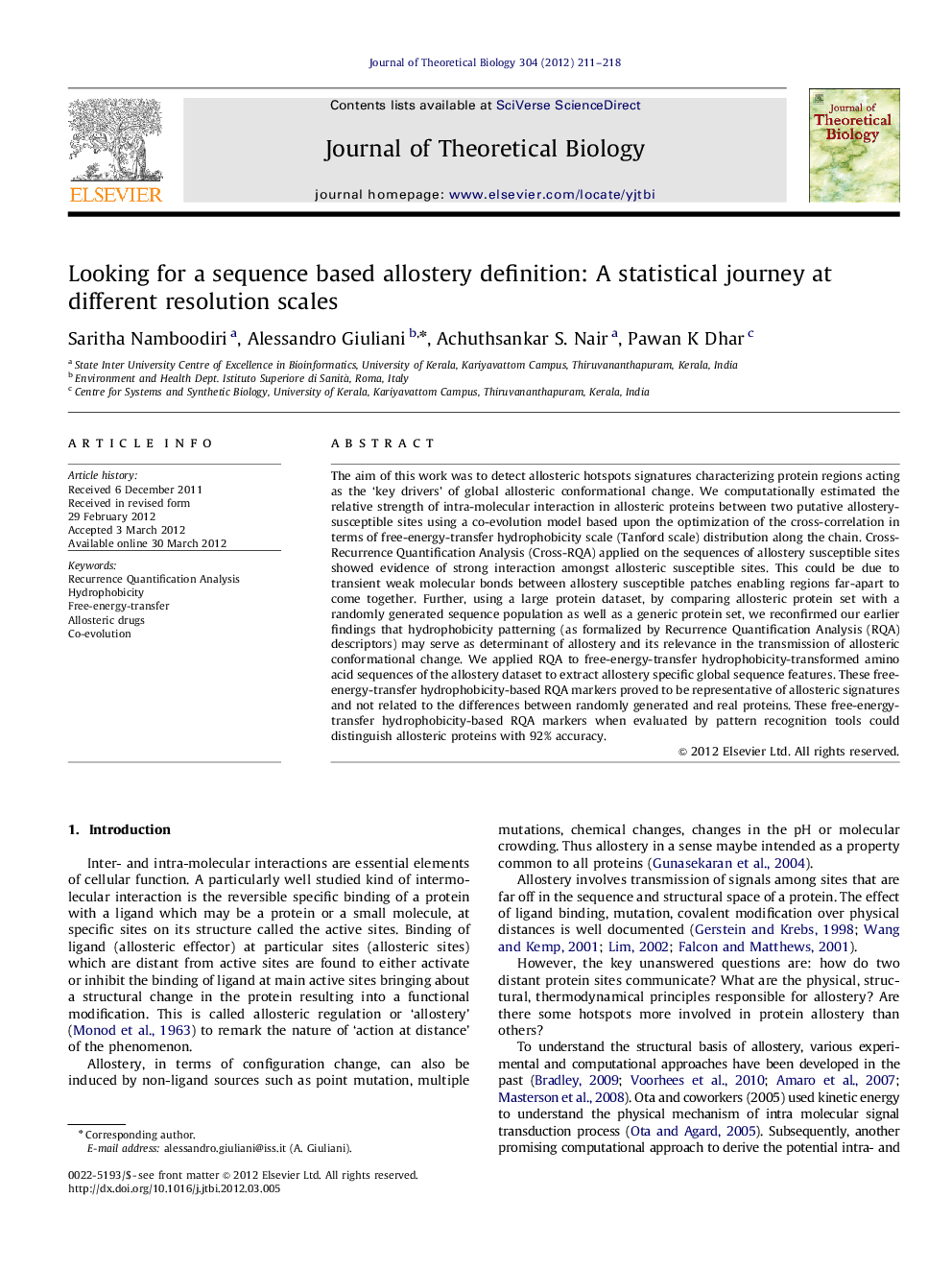| کد مقاله | کد نشریه | سال انتشار | مقاله انگلیسی | نسخه تمام متن |
|---|---|---|---|---|
| 4496700 | 1623906 | 2012 | 8 صفحه PDF | دانلود رایگان |

The aim of this work was to detect allosteric hotspots signatures characterizing protein regions acting as the ‘key drivers’ of global allosteric conformational change. We computationally estimated the relative strength of intra-molecular interaction in allosteric proteins between two putative allostery-susceptible sites using a co-evolution model based upon the optimization of the cross-correlation in terms of free-energy-transfer hydrophobicity scale (Tanford scale) distribution along the chain. Cross-Recurrence Quantification Analysis (Cross-RQA) applied on the sequences of allostery susceptible sites showed evidence of strong interaction amongst allosteric susceptible sites. This could be due to transient weak molecular bonds between allostery susceptible patches enabling regions far-apart to come together. Further, using a large protein dataset, by comparing allosteric protein set with a randomly generated sequence population as well as a generic protein set, we reconfirmed our earlier findings that hydrophobicity patterning (as formalized by Recurrence Quantification Analysis (RQA) descriptors) may serve as determinant of allostery and its relevance in the transmission of allosteric conformational change. We applied RQA to free-energy-transfer hydrophobicity-transformed amino acid sequences of the allostery dataset to extract allostery specific global sequence features. These free-energy-transfer hydrophobicity-based RQA markers proved to be representative of allosteric signatures and not related to the differences between randomly generated and real proteins. These free-energy-transfer hydrophobicity-based RQA markers when evaluated by pattern recognition tools could distinguish allosteric proteins with 92% accuracy.
► Allosteric hotspots signatures are discriminated on a pure sequence basis.
► Co-evolution amongst allosteric sites was made evident.
► Establishment of transient weak molecular bonds between allosteric patches.
► Hydrophobicity patterns (estimated by RQA) may serve as determinant of allostery.
► Departure of real proteins from random sequences.
Journal: Journal of Theoretical Biology - Volume 304, 7 July 2012, Pages 211–218